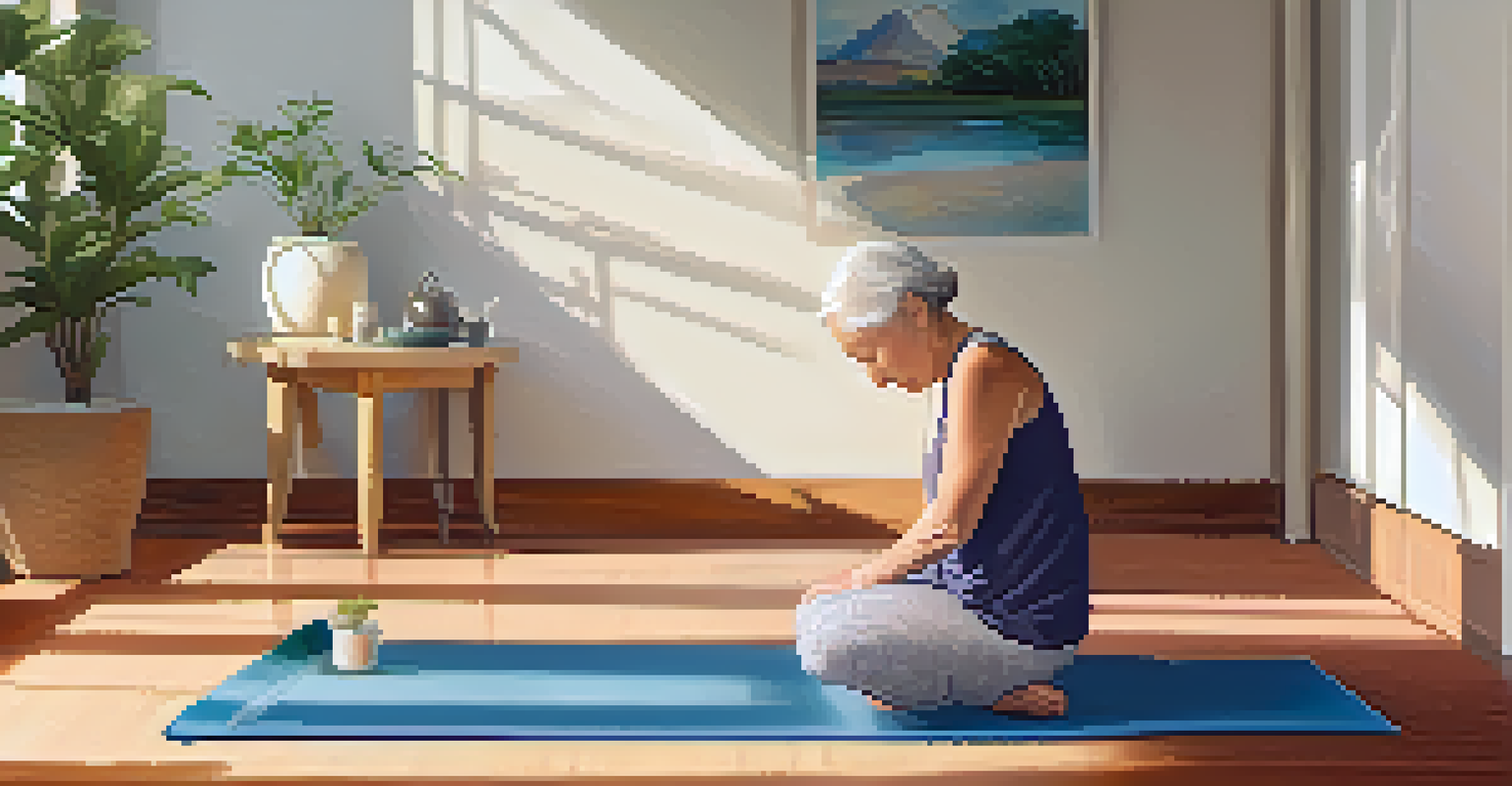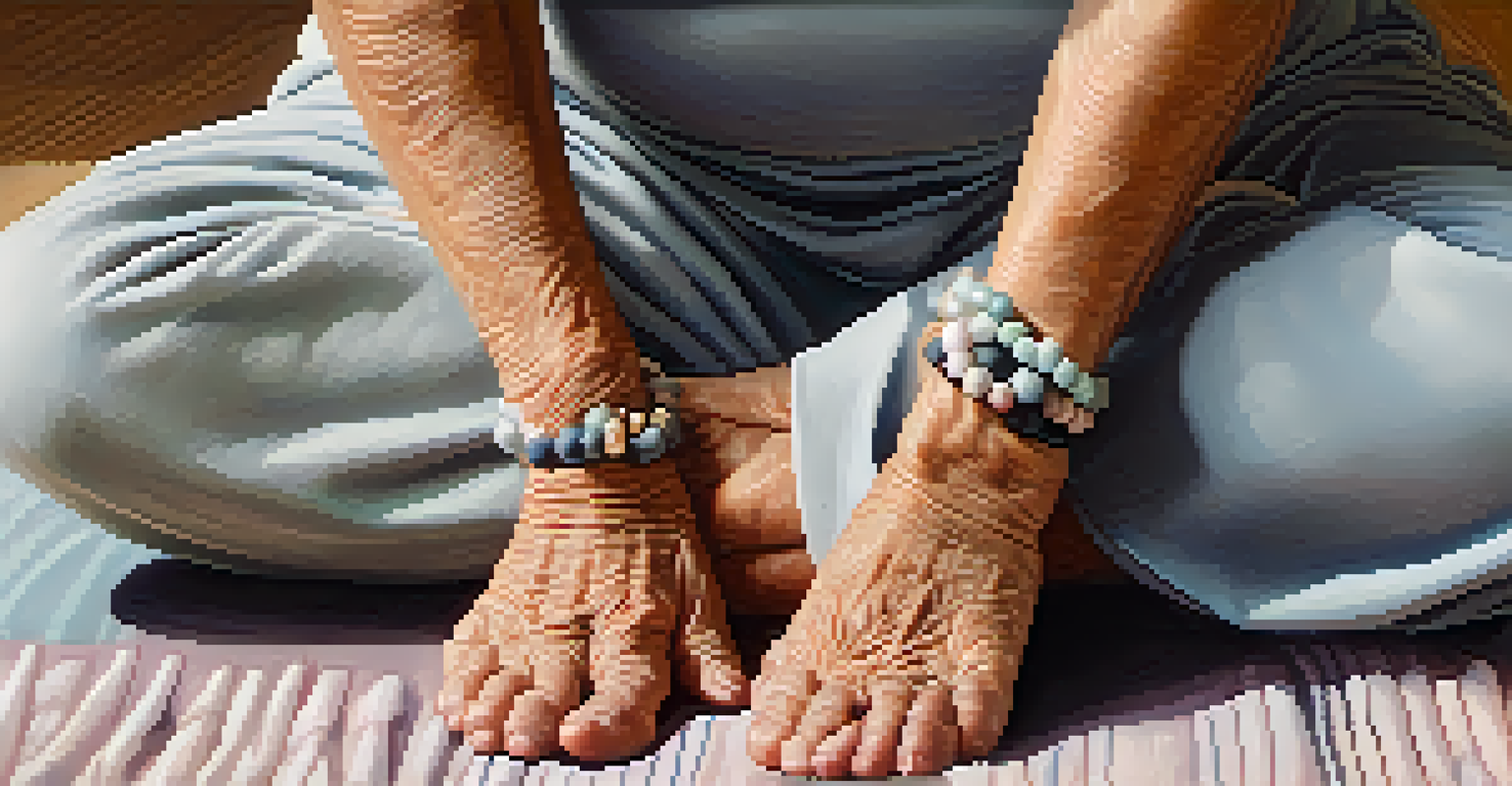Gentle Yoga Poses for Seniors to Alleviate Joint Pain

Understanding Joint Pain in Seniors and Its Impact
As we age, many of us experience joint pain due to wear and tear, which can significantly impact our daily lives. Conditions like arthritis, bursitis, and simple stiffness can make even routine activities feel challenging. Recognizing this pain is the first step toward finding relief, and gentle yoga can be a wonderful tool for that.
In the midst of movement and chaos, keep stillness inside of you.
Joint pain can lead to a more sedentary lifestyle, which in turn can worsen both physical and emotional health. It’s like a snowball effect—one issue leads to another. Therefore, addressing joint discomfort is essential for maintaining mobility, independence, and overall well-being.
Incorporating gentle yoga poses into your routine not only helps alleviate pain but can also enhance flexibility, strength, and balance. This holistic approach nurtures the body and mind, creating a sense of peace that can be incredibly beneficial for seniors.
The Benefits of Gentle Yoga for Seniors' Joint Health
Gentle yoga is perfect for seniors as it focuses on slow movements and stretching, making it easier on the joints. Think of yoga as a warm hug for your body, embracing it with care while promoting healing and flexibility. Regular practice can lead to improved range of motion, which is especially important for those suffering from joint pain.

One of the standout benefits of yoga is its ability to reduce stress and promote relaxation. When you’re less stressed, your body can focus on healing, and that includes easing joint discomfort. Plus, the calming nature of yoga can enhance mental clarity, which is just as crucial for overall health.
Gentle Yoga Eases Joint Pain
Incorporating gentle yoga into your routine can alleviate joint pain while enhancing flexibility and overall well-being.
Moreover, gentle yoga encourages mindful breathing, which can help regulate your body’s response to pain. By focusing on your breath, you create a natural rhythm that can soothe discomfort and promote a more positive mindset.
Preparation: Creating a Comfortable Yoga Space
Before diving into yoga, it's essential to create a comfortable and safe environment. Ensure you have a soft yoga mat or a non-slip surface to prevent any slips or falls. You might also want to have some props handy, like cushions or blocks, to make poses more accessible.
The body achieves what the mind believes.
Lighting and temperature can also affect your yoga experience. A well-lit, warm space can make it more inviting, while an overly bright or cold environment might distract you from your practice. Consider soft music or nature sounds to enhance your relaxation.
Lastly, wear comfortable clothing that allows for easy movement. Think of it as dressing for a cozy afternoon at home—your body will appreciate the freedom to stretch and bend without restriction.
Essential Gentle Yoga Poses for Easing Joint Pain
Starting with seated poses is a great way to ease into yoga. Poses like Seated Forward Bend or Easy Pose can help stretch the spine and legs without putting too much strain on your joints. These poses invite relaxation while gently opening up tight areas.
Another beneficial pose is the Cat-Cow Stretch, which is fantastic for warming up the spine. As you transition between these two positions, it mimics the natural movement of your back and helps alleviate stiffness. It’s like giving your spine a gentle massage.
Create a Safe Yoga Space
Establishing a comfortable and safe environment is essential for a positive yoga experience, especially for seniors.
Finally, consider incorporating Child's Pose into your routine. This restorative pose allows your body to relax fully while gently stretching the hips and lower back. It’s a wonderful way to listen to your body and honor its need for rest.
Incorporating Breathwork into Your Practice
Breathwork is a fundamental aspect of yoga that can greatly enhance your practice. Focusing on your breath helps anchor your mind and body, which is particularly helpful when dealing with discomfort. Inhale deeply, allowing your abdomen to rise, and exhale slowly, feeling any tension melt away.
As you move through your gentle yoga poses, synchronize your movements with your breath. For instance, as you reach your arms overhead, take a deep breath in, and as you fold forward, breathe out. This rhythm fosters a deeper connection to your body, promoting relaxation.
Using breathwork can also help you manage pain. When discomfort arises, return your focus to your breath, allowing it to guide you through the moment. This mindful approach not only distracts from pain but also teaches you to respond to it with calmness.
Listening to Your Body: A Key to Safe Practice
One of the most important principles of yoga, especially for seniors, is to listen to your body. Each individual’s experience with joint pain is unique, so it’s vital to tune into your body’s signals. If a pose feels uncomfortable, it’s perfectly okay to modify it or skip it altogether.
Consider yoga as a personal journey. What works for one person may not be suitable for another, and that’s completely fine. Embrace the idea that your practice is about what feels good for you in that moment.
Consistency is Key for Relief
A regular yoga practice, even for just a few minutes several times a week, can lead to long-term relief from joint discomfort.
This mindset not only helps in preventing injuries but also fosters a sense of empowerment. By honoring your body’s needs, you create a more enjoyable and sustainable yoga practice that can bring lasting relief from joint pain.
Establishing a Consistent Yoga Routine for Long-term Relief
To truly reap the benefits of gentle yoga, consistency is key. Aim to practice at least a few times a week, even if it’s just for 10-15 minutes. Think of it as nurturing a plant; regular care leads to growth and health over time.
You might find it helpful to set a specific time for your yoga practice, whether it’s in the morning to start your day or in the evening to unwind. Creating a routine helps reinforce the habit and makes it easier to stick with.

Don't hesitate to mix things up as well. Explore different poses, or even try other forms of gentle movement like tai chi or walking. The goal is to keep your body engaged and to find joy in movement, helping to alleviate joint pain in the long run.